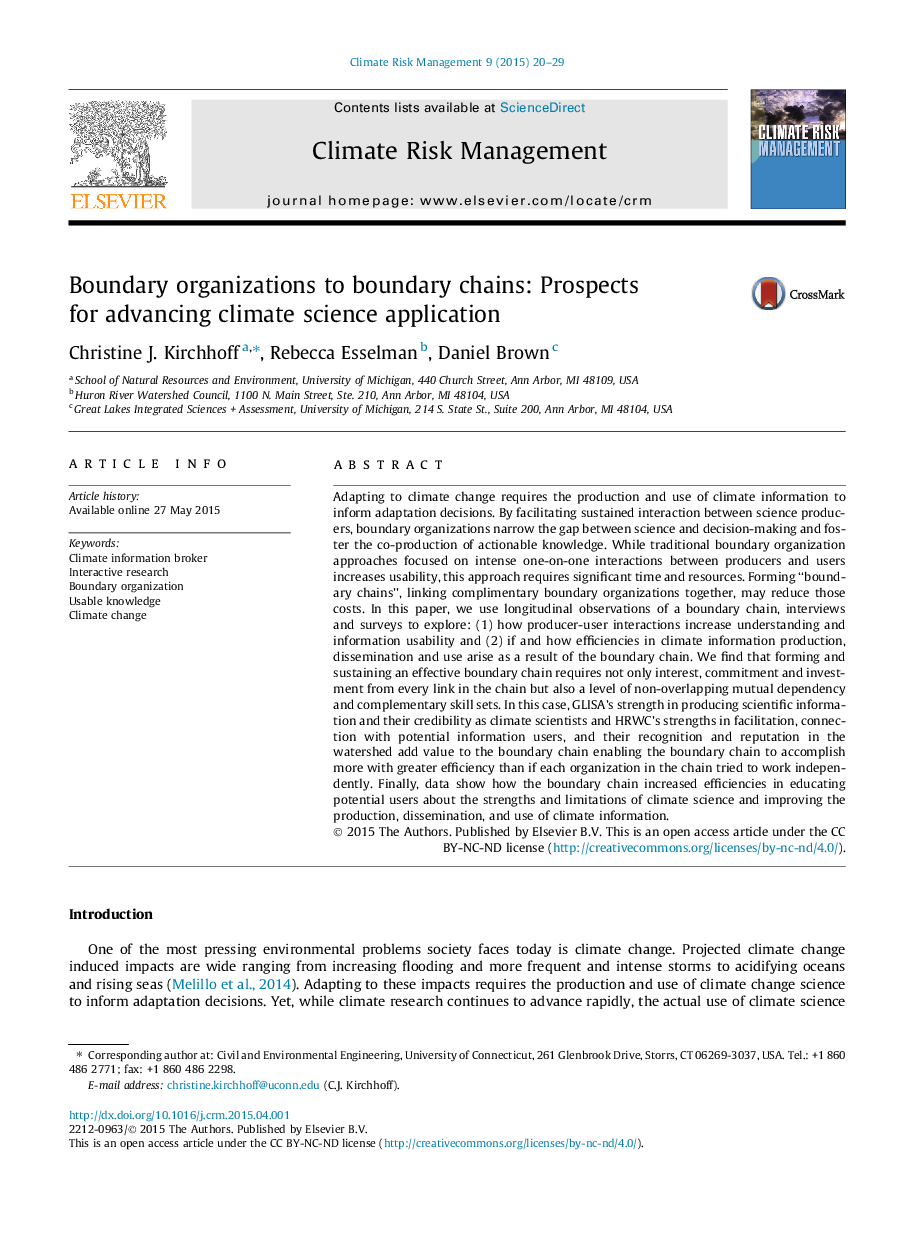| Article ID | Journal | Published Year | Pages | File Type |
|---|---|---|---|---|
| 1051252 | Climate Risk Management | 2015 | 10 Pages |
Adapting to climate change requires the production and use of climate information to inform adaptation decisions. By facilitating sustained interaction between science producers, boundary organizations narrow the gap between science and decision-making and foster the co-production of actionable knowledge. While traditional boundary organization approaches focused on intense one-on-one interactions between producers and users increases usability, this approach requires significant time and resources. Forming “boundary chains”, linking complimentary boundary organizations together, may reduce those costs. In this paper, we use longitudinal observations of a boundary chain, interviews and surveys to explore: (1) how producer-user interactions increase understanding and information usability and (2) if and how efficiencies in climate information production, dissemination and use arise as a result of the boundary chain. We find that forming and sustaining an effective boundary chain requires not only interest, commitment and investment from every link in the chain but also a level of non-overlapping mutual dependency and complementary skill sets. In this case, GLISA’s strength in producing scientific information and their credibility as climate scientists and HRWC’s strengths in facilitation, connection with potential information users, and their recognition and reputation in the watershed add value to the boundary chain enabling the boundary chain to accomplish more with greater efficiency than if each organization in the chain tried to work independently. Finally, data show how the boundary chain increased efficiencies in educating potential users about the strengths and limitations of climate science and improving the production, dissemination, and use of climate information.
